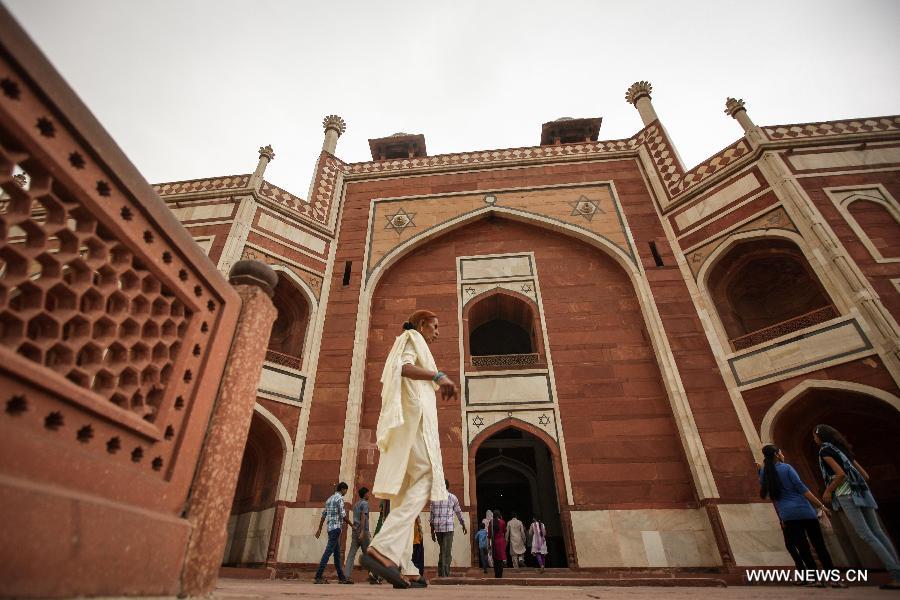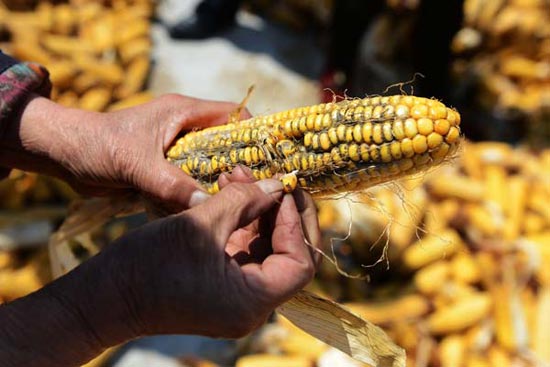
Citizens' rights to live in clean and hygienic environment have been further protected. Environmental assessment and monitoring have been further strengthened, which cover routine monitoring of environmental elements, such as surface water, air, acid deposition, impact of sand and dust storms, drinking-water source areas, offshore seas, urban noise and ecosystems, supervisory monitoring of pollution sources and early-warning monitoring of emergencies. National and local environment monitoring networks that cover all environmental elements have basically been established in China, and an environmental supervision system has been further enhanced. China has set up water resources protection bodies in its seven major river basins, established and improved the supervisory agencies of regional environmental protection and radiation safety. It has also built an early-warning system of environmental monitoring, a supervision system of environmental emergency response and law enforcement, and a nuclear and radiation safety supervision system. By the end of 2011, China had 144 environmental-assessment agencies, with one at national level, 28 at provincial level and 115 at prefectural level, employing some 2,000 professionals. Since China sent its HJ-1C satellite into space in 2012, fine particles (PM2.5 particles) have been included in the air quality index. China also monitors the acoustic environment in 316 cities, of which 3.5 percent are at the satisfactory level, 75.9 percent at the moderate level, 20.3 percent lightly polluted and the other 0.3 percent moderately polluted. Substantial progress has been made in urban pollution control. China's daily sewage treatment capacity increased by 46 million tons from 2008 to 2012. By the end of 2012, China had 3,340 urban sewage treatment plants, which could treat 142 million cubic meters of wastewater per day, an increase of 3.7 percent as compared with the end of the previous year. The treatment rate of domestic sewage had risen from 52 percent in 2005 to 84.9 percent in 2012. There were altogether 677 urban facilities for harmless treatment of domestic garbage in operation in China by the end of 2011, which could deal with 409,000 tons of garbage every day, and 79.84 percent of the garbage was made harmless after the treatment. Quantitative assessment has been enforced for all 661 cities in the country for comprehensive environmental improvement, gaining satisfactory results in energy conservation and emission reduction. Since 2010 China has chosen 25 cities as pioneers for the "Electric Vehicles in Cities" project, to promote the large-scale application of hybrid, electric or fuel-cell vehicles in public transportation. Another project - "Urban LED" - advocates the use of semiconductor lighting technology in the public lighting systems of many pilot cities. Over 1.6 million LED lights have been used for the experiment so far, accumulatively saving 164 million kwh of electricity. From 2008 to 2012 China closed down many of its outdated production facilities, including iron works with a total capacity of 117 million tons, steel mills with a total capacity of 78 million tons and cement plants with a total capacity of 775 million tons. The energy consumption per unit of GDP fell by 17.2 percent in the same period, and the total chemical oxygen demand (COD) and sulfur dioxide emission decreased by 15.7 percent and 17.5 percent, respectively. China over-fulfilled its goal of closing down outdated production facilities in high-energy consumption and emission industries like iron and steel, cement and coking. During the 11th Five-year Plan period (2006-2010), the net coal consumption for thermal power generation fell by 9.5 percent, and the COD load per unit of product in the papermaking industry declined by 45 percent. The sulfur dioxide emission nationwide was reduced by 14.29 percent, and the total COD discharge went down by 12.45 percent.
Citizens' right to good eco-environment is further secured. From 2008 to 2012 China dredged 24,500 km of key medium and small rivers, and increased the water-saving irrigation area by 7.7 million hectares (ha). In 2011 and 2012, the central government earmarked a special fund of 2.4 billion yuan for supporting a pilot program for a balanced lake eco-system, increasing the initial eight lakes to 27 now. So far, 80,000 mu (about 5,333 ha.-tr.) of wetlands have been restored and 160,000 mu (about 10,667 ha.-tr.) of forest-covered area has been created in the first eight lakes of the pilot program, effectively improving the water quality and self-recovery capability of these lakes. China implements in full a mechanism for subsidization for grassland eco-system protection. In 2011 and 2012 the central coffer allocated 28.6 billion yuan to subsidize a grazing ban on 1.23 billion mu (about 82 million ha.-tr.) of pastureland and to reward efforts to achieve a balance between the forage yield and number of animals on 2.605 billion mu (about 174 million ha.-tr.) of pastureland. By 2012 the vegetation coverage of grasslands across China had reached 53.8 percent, an increase of 2.8 percentage points over 2011, and the fresh grass yield of natural pastures amounted to 1.05 billion tons, an increase of 4.7 percent over 2011. The comprehensive conservation of water and soil has been further improved. From 2008 to 2012 an additional 29.53 million ha. of land was planted with trees, desertification was halted on 11.96 million ha. of land, soil erosion on 246,000 sq km of land was brought under control, and a total of 180,000 sq km of land was improved. The number of key counties halting stony desertification was increased to 300, and the project to control the sources of the sandstorms that hit Beijing and Tianjin was extended to include 138 counties in six provincial-level regions. The pace is accelerated in key regional eco-system development projects, such as the comprehensive treatment plan of the Tarim, Heihe and Shiyang river basins and the plan of water resources sustainable utilization for Beijing. The integrated project for rational utilization of water resources and ecological protection in Dunhuang has been going into full swing. China's urban green areas now total 2,242,861 ha., covering 39.22 percent of the total urban land, with the per-capita green area in public parks being 11.8 sq m. China now has 10,780 public parks, among which 63 are key national ones and 45 national urban wetland parks. Regional ecological treatment and protection has been constantly intensified. The state has set up the National Committee for Biodiversity Protection. By the end of 2012, there were 2,640 nature reserves of various kinds and at various levels in China (excluding those in Hong Kong, Macao and Taiwan regions), among which 363 were at national level, covering an area of 94.15 million ha., or 9.7 percent of China's total land area. Besides, China boasted 962 scenic areas, among which 225 were national ones, covering an area of 193,700 sq km, or 2.02 percent of China's total area. In order to improve the eco-system of the Qinghai Lake area, the state set up a 6,200-mu (about 413 ha.-tr.) experimental and demonstration zone for wetland protection and recovery, a 10,100-mu (about 673 ha.-tr.) demonstration zone for desertification control and a 14,650-mu (about 977 ha.-tr.) demonstration zone for deteriorated grassland recovery. A regional technical mode of ecological environment improvement was formed, effectively improving the eco-system of the lake area. Steady progress has been made in protecting its wetlands. The state has confirmed 11 national major wetlands and the total number of wetlands has reached 39. An additional 330,000 ha. of wetlands is put under state protection, and 23,000 ha. of wetlands is restored. It has introduced pilot projects for recovering the habitats of nearly 20 species of wild animals and implemented breeding projects for nearly 30 species of rare or endangered wild animals. Marine ecological environment protection has also been strengthened. In 2012 the State Oceanic Administration investigated and handled 176 cases that violated the marine environment law. The newly established 15 national marine conservation zones increased the total conservation area by 751 sq km. China has initiated a plan to create a red-line system in the Bohai Sea to delimit zones in which development is prohibited or limited. It confirmed 21 marine eco-environment restoration projects and 70 island improvement and protection projects. Among the 301 offshore seawater quality monitoring points, 69.4 percent met the national Grade I or II standards for ocean water quality.
【11】 【12】 【13】 【14】 【15】 【16】 【17】 【18】 【19】 【20】
【21】 【22】


















 Father arrested for 'torturing' teen daughter
Father arrested for 'torturing' teen daughter


![]()
